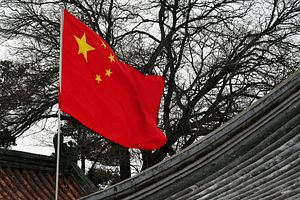The fifth plenary session of the 18th Communist Party Central Committee (CPCC) will take place from October 26 to 29 and will result in the thirteenth Five-Year Plan, a lengthy document outlining the Chinese government’s economic objectives and the policy approaches for attaining those objectives through 2020. International investors and China-watchers alike will be eagerly anticipating the outcomes of the highly secretive Fifth Plenum this week. Given the volatile summer in Chinese equity markets and the recent release of GDP figures that seemed “too good to be true” by some, the steps that China’s top leaders will outline in the coming week will be incredibly important. As I’ve done in the past for The Diplomat ahead of other CPCC plenaries, I look at a few things that can be reasonably expected this week. As with all CPCC plenary meetings, the proceedings are hermetically sealed away from the eyes of all but a select few within China’s state media apparatus.
First, a bit of context that should help ground some of the expectations for this Fifth Plenum. China’s twelfth five-year plan, endorsed in March 2011 by the National People’s Congress, set in motion the latest shift in the “Chinese model” of growth. In broad strokes, per the twelfth five-year plan, the Party would encourage a shift away from the investment-led model of growth that had served China so well through the noughties and move toward a consumption-led model leveraging the demand-side of the growth equation. The idea was to make the most of urbanization, rising per capita incomes, and the rising economic appetite of a new middle class.
In 2013 and 2014, the third and fourth plenary sessions of the 18th CPCC added additional layers of reform. I won’t discuss those in much detail here, but, briefly, the Third Plenum covered a range of economic reform issues short of full-on state-owned enterprise reform. At the time, Chinese leaders declared that markets must “play a decisive role in allocating resources.” The Fourth Plenum, as Shannon Tiezzi wrote at the time, focused more on “comprehensively advancing ruling the country according to the law” – in essence, the Party contoured an understanding of the “rule of law” with Chinese characteristics. Economic reform has also come to China outside of the rubric of the CPCC plenary meetings. As I wrote a few weeks ago, the Chinese State Council has issued a new set of reform guidelines for state-owned enterprises.
With the Fifth Plenum, expectations are high and the Party leadership faces a daunting task in outlining an adequately flexible and structurally sound 13th Five-Year Plan. First, we can expect a more “realistic” growth target to be put in place by the leadership. Following the release of last quarter’s numbers, which showed a 6.9 percent growth rate, Chinese leaders will be looking to manage international expectations and ease international investors into a “new normal” of around 6.5 percent. Targets matter for both structural and psychological reasons and the latter shouldn’t be underestimated. As The Economist noted recently, the “farther growth slips below target, the more the government will be under pressure to stimulate the economy.” A 6.5 percent target would suggest that the Party leadership are serious about pursuing real and painful structural adjustments that could cost short-term growth in exchange for longer term stability.
Though the economic importance of the Fifth Plenum shouldn’t be understated, what may be more interesting yet to many China-watchers is the possibility of a major leadership shake-up following the Fifth Plenum. People’s Daily reported ahead of the opening of the plenary on Monday that “more than half of the Communist Party of China (CPC) Central Committee members selected during the 18th CPC National Congress in 2012 have been moved to different positions or were removed from their current jobs ahead of the CPC’s fifth plenary session,” a development it described as “extremely rare.” The New York Times‘ Sinosphere notes that historically either the fourth or the fifth plenum is where a major leadership shake-up occurs (since they roughly correspond to the mid-point between party congresses). Expect to possibly see big names such as Han Zheng, the Shanghai party boss and Politburo member, leave the scene. Liu Yuan, the political commissar of the General Logistics Department of the People’s Liberation Army, could be in for a promotion with a top role at the power Central Military Commission.
Beyond economic and personnel moves, the upcoming plenary could bring clarity to the future of Xi Jinping’s anti-corruption campaign. On Friday, Chinese state media reported, with strategic timing ahead of the Fifth Plenum, that the Wang Qishan-led Central Commission for Discipline Inspection (CCDI) would “expand its inspections into more state entities this year, with its sight set on major financial institutions including the central bank, securities regulators and state-owned banks.” If anything, the climate is right in China for an intensification of the anti-corruption campaign to assure both the Chinese public and international investors that inefficiency, cronyism, and embezzlement won’t bring down the Chinese economic machine. The Fifth Plenum may see the CCDI make good on Xi’s 2014 promise to “gnaw even tough bones and dare to ford dangerous rapids” now that the “easier reforms that could make everyone happy have already been completed.”
Finally, the Fifth Plenum is the starting point for the next chapter in the story of the “China model.” Following this week’s secretive deliberations, we’ll see the release of a communiqué outlining some of the major outcomes in aspirational and vague language. From there, the Fifth Plenum’s outcomes will be dealt with again at the annual Central Economic Work Conference in December. Finally, the March meeting of the National People’s Congress will have to rubber-stamp and grant its imprimatur to the thirteenth Five-Year Plan. By the end of the week, the outcomes of China’s Fifth Plenum will be made public, shedding light on the path the world’s second largest economy will walk through 2020.

































